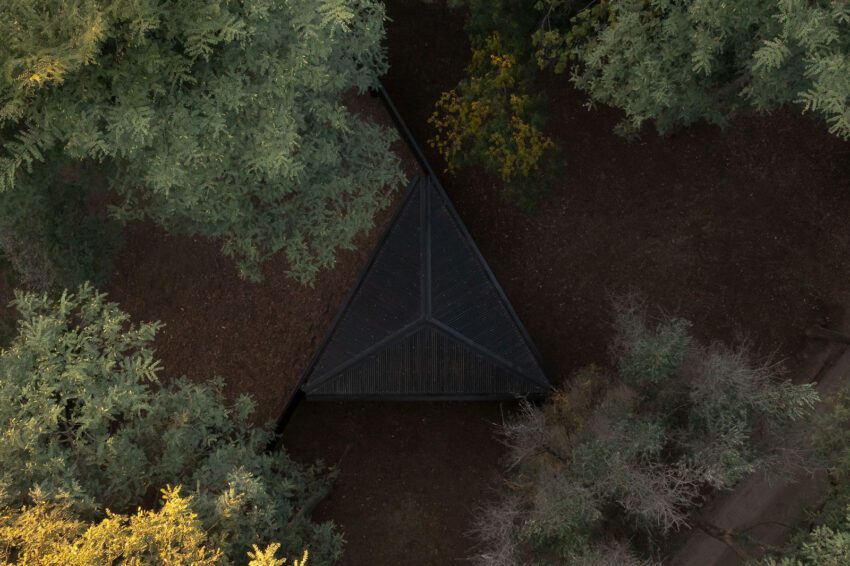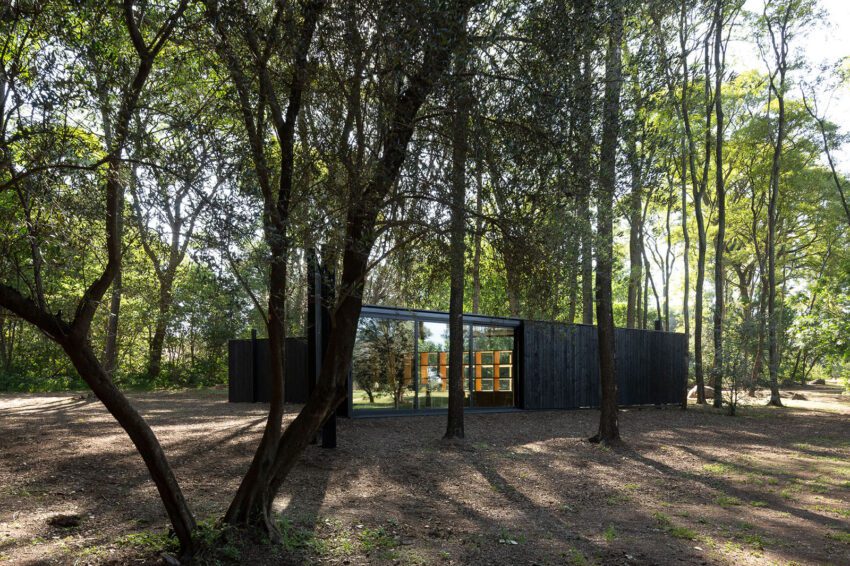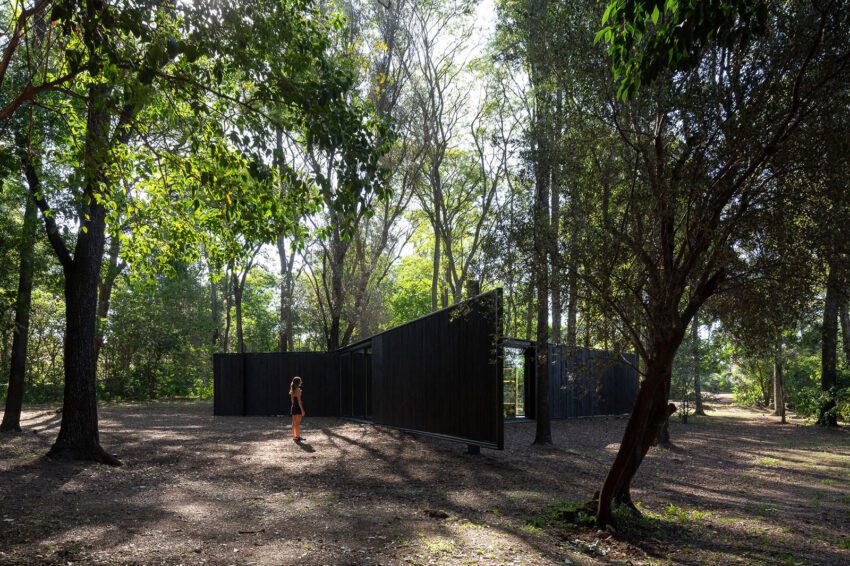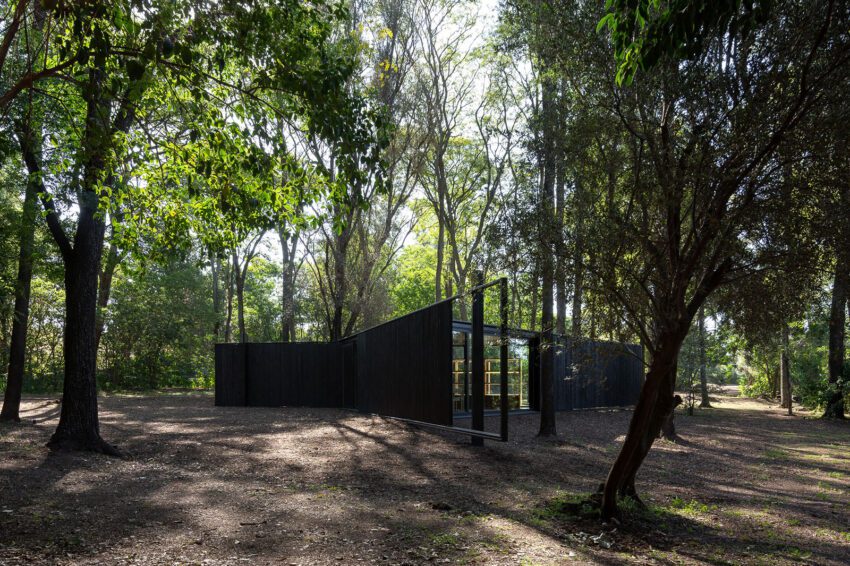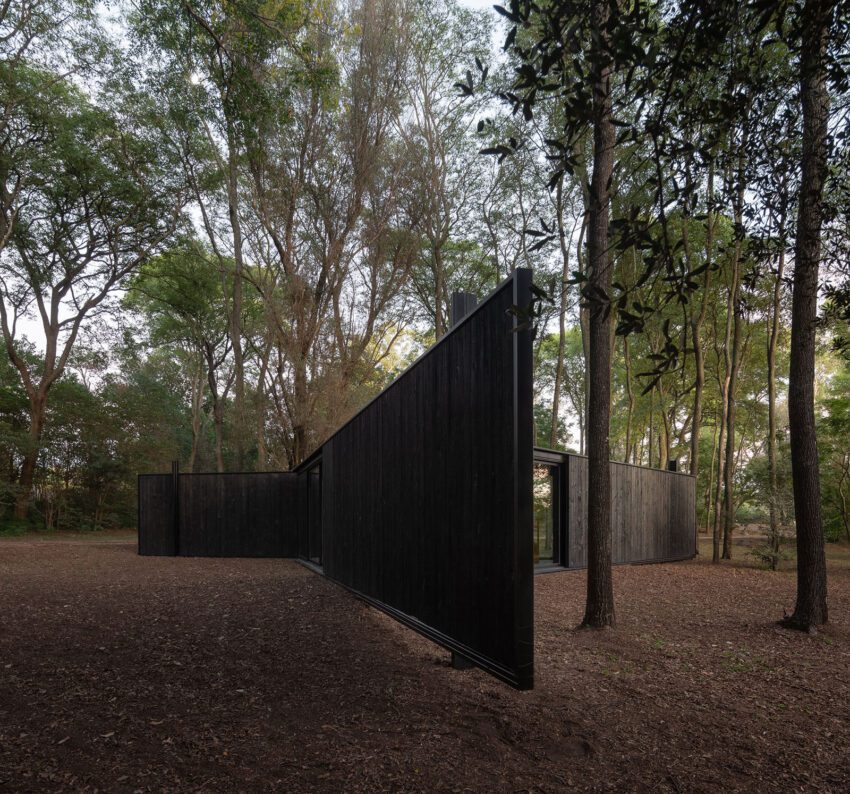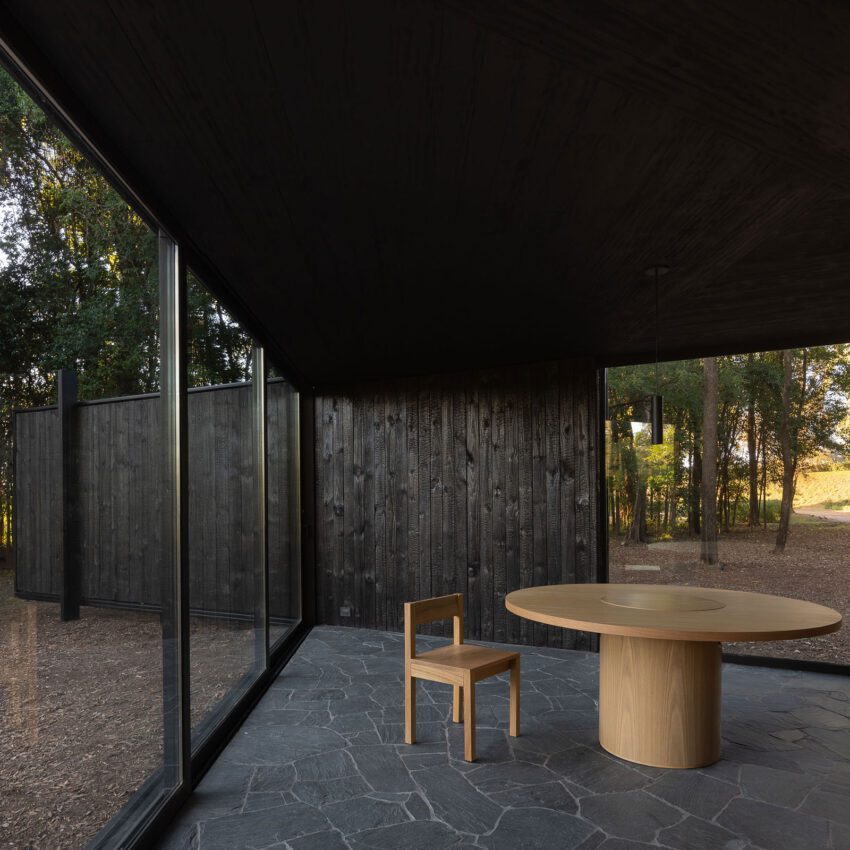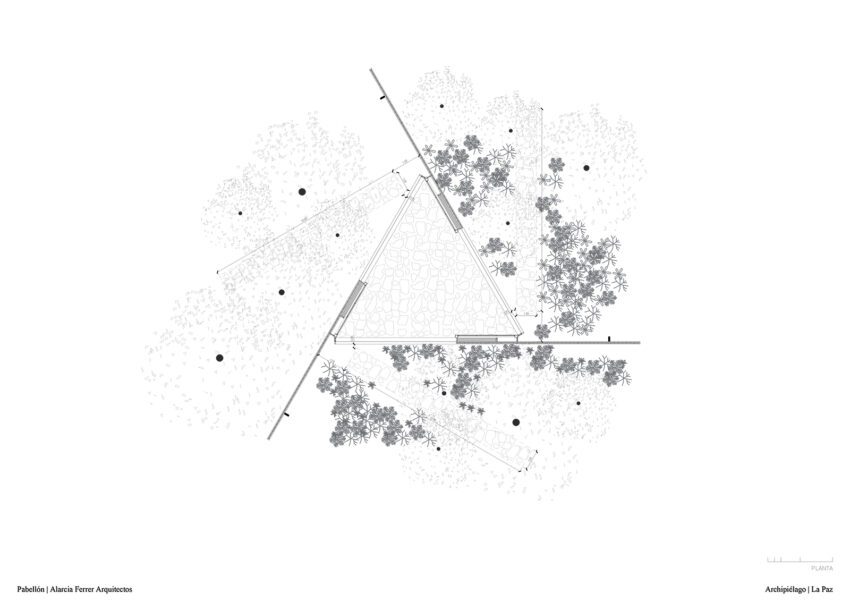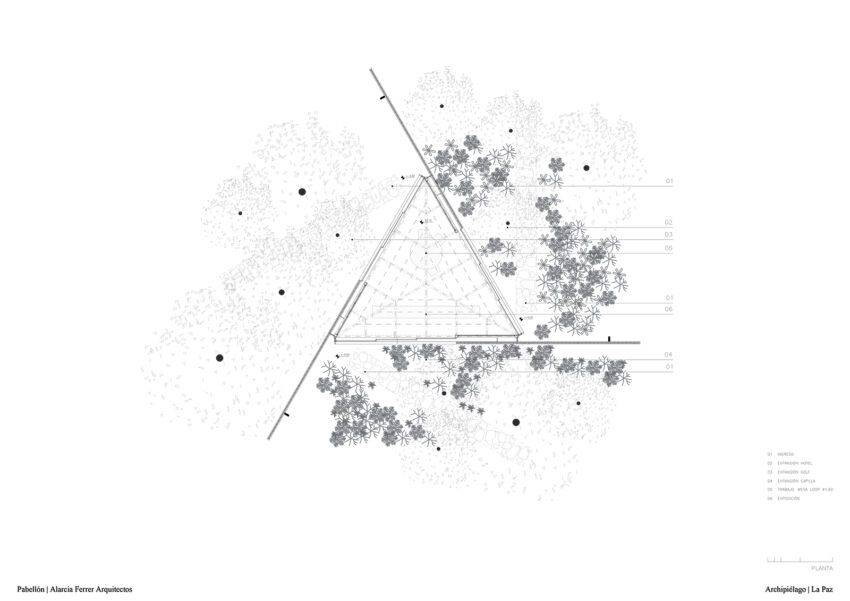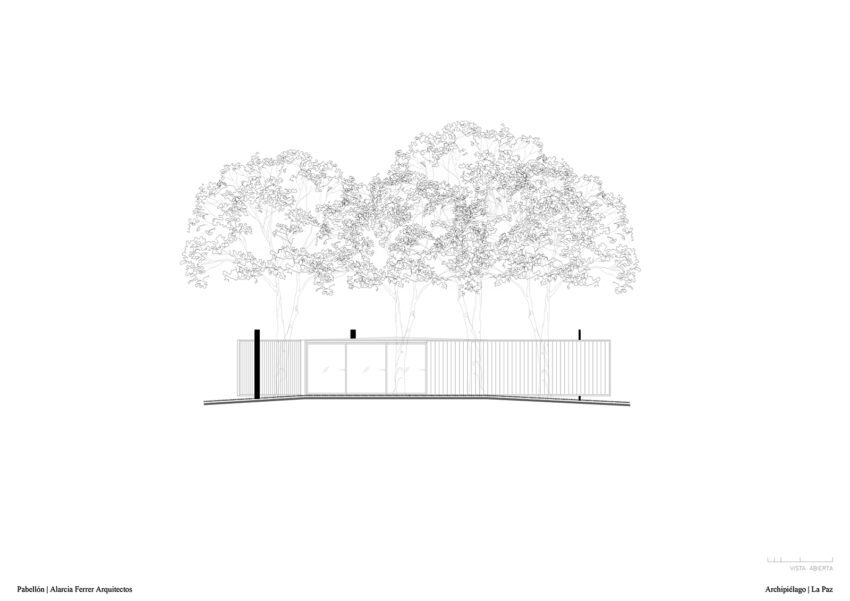Completed in 2023, the Archipiélago “Casas de autor” project is a testament to the innovative prowess of Alarcia Ferrer Arquitectos. This groundbreaking initiative features the construction of twelve distinct houses, each a product of the creativity of different architectural studios. Extending the scope of the project beyond just the residential buildings, it also encompasses the creation of a versatile pavilion, beautifully situated in the serene Estancia La Paz forest.
Designed to serve as an exhibition space for these signature homes, the pavilion embodies neutrality, providing the perfect backdrop for presenting scale models and prospective architectural designs that are set to transform the living experience in La Paz. The strategic location of the pavilion, along with its cutting-edge design elements, creates a dynamic space that can seamlessly integrate with its environment or stand apart as needed.
Archipelago Pavilion Technical Information
- Architects: Alarcia Ferrer Arquitectos
- Location: Estancia La Paz, Ascochinga, Córdoba, Argentina
- Topics: Pavilions, Triangular Shapes
- Area: 36 m2
- Project Year: 2022 – 2023
- Photographs: © Javier Agustín Rojas
The main characteristic of the space is the possibility of opening or closing it completely, thanks to a series of three nine-meter sliding walls that connect or separate it from the surrounding landscape, reconfiguring the immediate environment according to the needs of the moment.
– Alarcia Ferrer Arquitectos
Archipelago Pavilion Photographs
Text by the Architects
The Archipiélago “Casas de Autor” project is an innovative venture involving the construction of twelve unique homes, each envisioned and executed by a different architectural studio. The project also includes the erection of a quaint pavilion within the serene environment of the Estancia La Paz forest. This pavilion, conceived as a promotional space for these architecturally distinctive homes, features a neutral backdrop conducive to displaying scale models and future housing designs that seek to revolutionize the concept of living in La Paz. This space, besides its current purpose, offers flexibility that paves the way for potential adaptations in the future.
Strategically positioned between the transformed old town of Estancia La Paz, now a hotel, a golf course bar, and a scenic lakeside trail, the site’s conditions necessitated a unique design incorporating three entry points, resulting in a striking triangular layout.
One of the remarkable attributes of this space is its capability for transformation. This is made possible through three nine-meter sliding walls, which offer the opportunity to open or close the space in its entirety, thus reconfiguring the immediate environment as per requirements. At times, the pavilion presents a discreet, closed-off area, while at other times, its sliding surfaces nestle among the trees, inviting exploration in every direction and integrating the structure with its surroundings. Concealed behind blinds when open, the glass enclosures enhance the natural milieu through reflective surfaces when closed. These features, serving as points of reference and lending order to the site, bear echoes of Richard Serra‘s renowned sculptures such as ‘Sight Point‘ (1975) or ‘Spiral Jetty’ (1970).
Utilizing a logical dry construction method with black-painted metal tubes ensures a swift and efficient building process. The structure is further characterized by the extensive use of burnt timber cladding, lending the building a distinct color, texture, and aesthetic that perfectly melds with the surrounding nature. The interior, with its stone floors and meticulously crafted woodwork specifically designed to house the house project models, distinguishes itself from the other elements on site, truly standing out when the pavilion is open.
Archipelago Pavilion Plans
Archipelago Pavilion Image Gallery
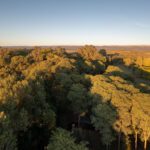


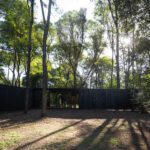
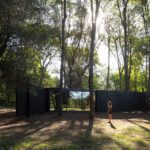

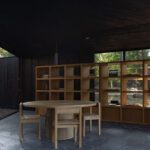
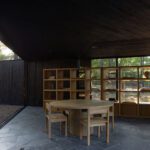
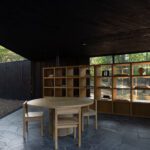


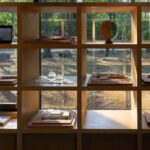

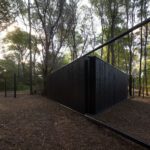
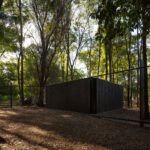
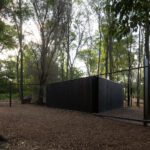
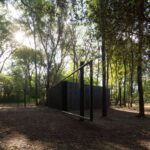
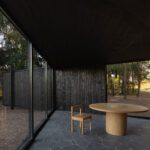
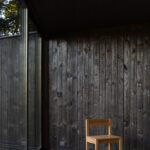

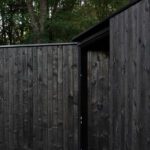

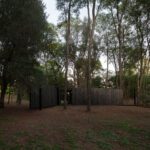

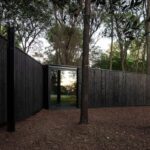

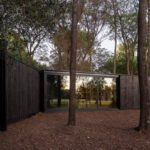
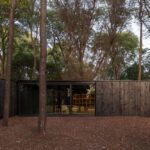
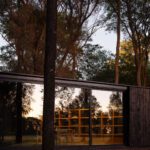

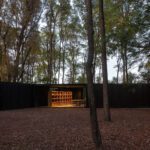
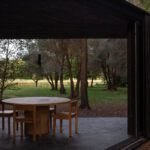
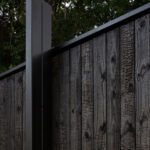



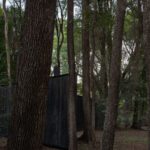



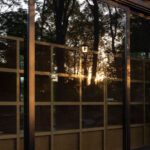

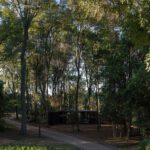
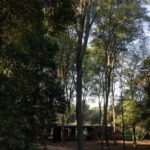

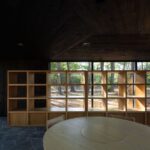
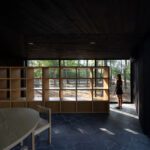
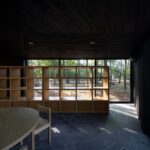
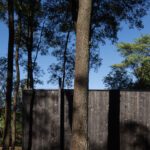

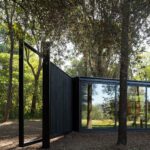
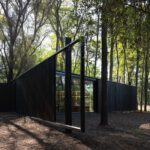
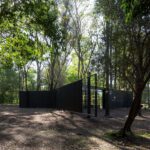

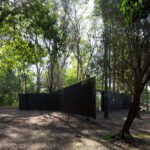
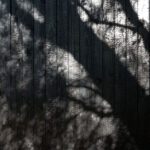
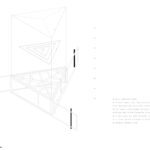
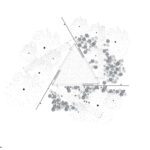
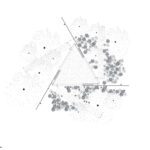

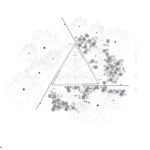
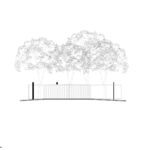
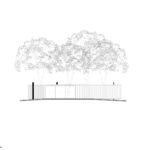
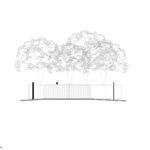
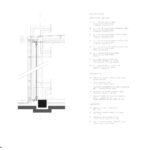
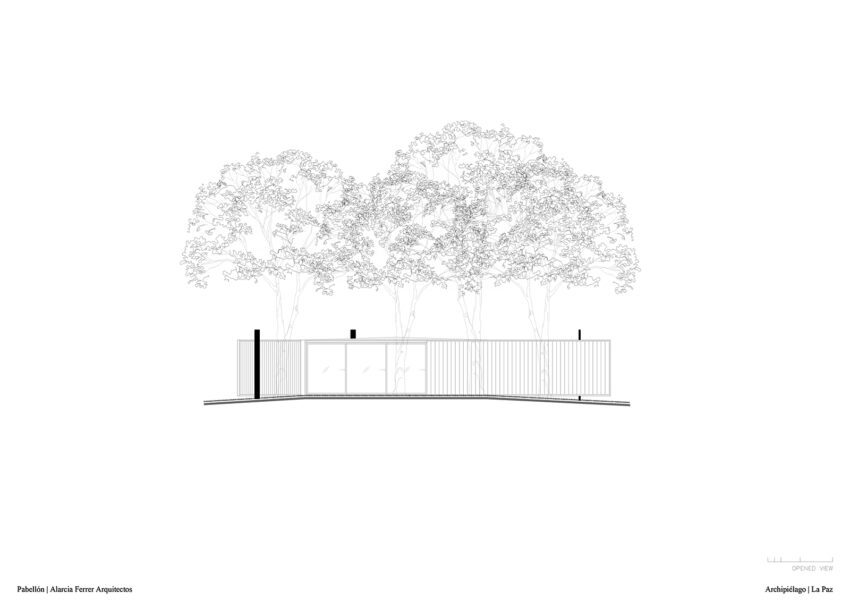
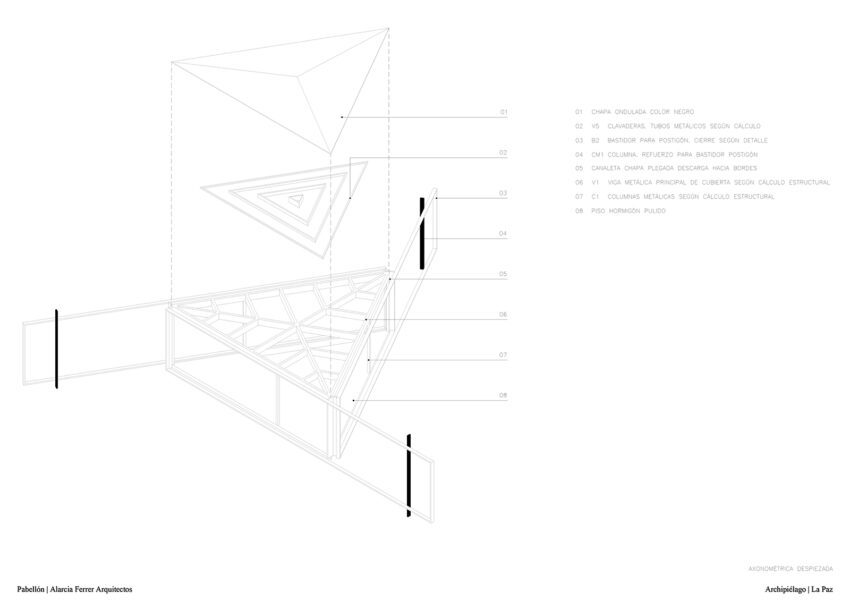
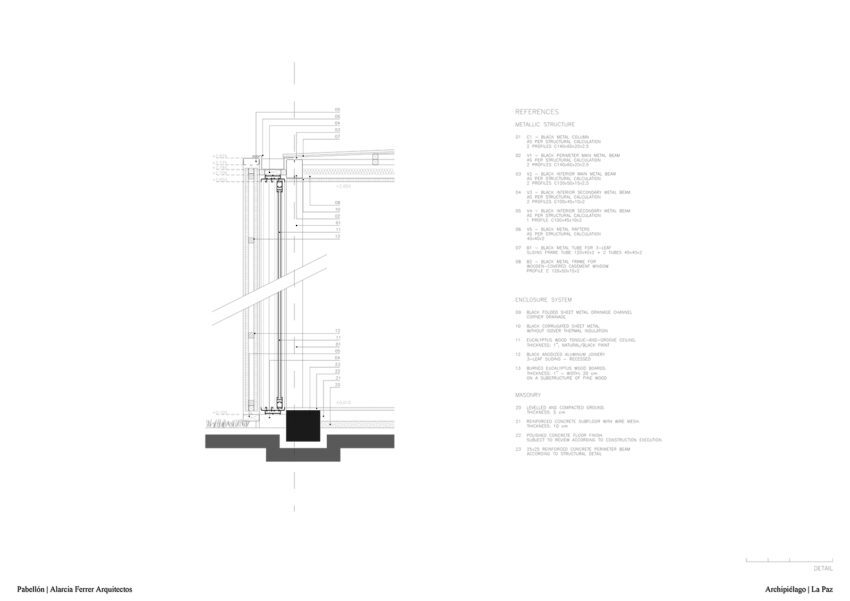
About Alarcia Ferrer Arquitectos
Established in 2009 and headquartered in Cordoba, Argentina, Alarcia Ferrer Arquitectos is an architectural firm led by Joaquín Alarcia and Federico Ferrer Deheza. With over a decade’s worth of experience, they have honed their craft through a close association with the landscapes of the Cordoba province. Their architectural philosophy is deeply rooted in exploring and articulating the complex interplay between natural environments and man-made structures, resulting in thought-provoking designs that echo the symbiosis and tension between these two entities.
Works from Alarcia Ferrer Arquitectos
- Authors: Joaquin Alarcia, Arch. Federico Ferrer Deheza, Arch.
- Collaborators: ODA; Julieta Scarafia, Arch. (equipment)
- Development: BONNART
- Technical director: Federico Monjo, Arch.


